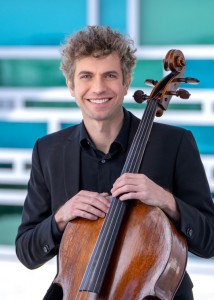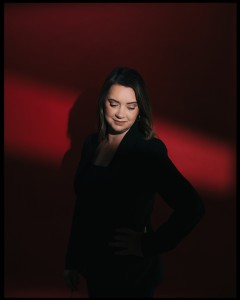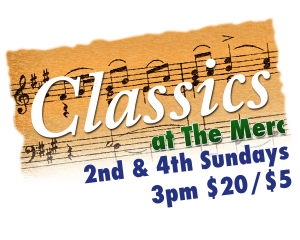Sunday, February 4, 2024, 3:00 p.m.
Gershwin Performing Arts Center | Murrieta Mesa High School
Today’s Program
Malcolm Arnold (1921 – 2006)
Sinfonietta No. 1, Op. 48 (1954)
1. Allegro comodo
2. Allegretto
3. Allegro con brio
Sally Beamish (b. 1956)
Hover (2018)
Franz Joseph Haydn (1732 – 1809)
Concerto in D Major for Cello and Orchestra
1. Allegro moderato
2. Adagio
3. Allegro
Andrew Hayhurst, cello
INTERMISSION
Franz Joseph Haydn
Symphony No. 95 in C Minor
1. Allegro moderato
2. Andante cantabile
3. Menuetto. Trio.
4. Finale. Vivace.
Thanks to the Murrieta Valley Unified School District for their support of this concert.
About our Soloist
 Cellist Andrew Hayhurst holds Bachelor’s degrees in Cello Performance and Performing Arts Technology from the University of Michigan where he received a full merit scholarship and graduated with highest honors. He earned his Master of Music in 2013 from the Yale School of Music.
Cellist Andrew Hayhurst holds Bachelor’s degrees in Cello Performance and Performing Arts Technology from the University of Michigan where he received a full merit scholarship and graduated with highest honors. He earned his Master of Music in 2013 from the Yale School of Music.
After graduating from Yale, Mr. Hayhurst performed regularly with the Los Angeles Opera and Los Angeles Philharmonic, including their 2015 Asia tour with Gustavo Dudamel. He also recorded in many of Hollywood’s major studios and was the Associate Principal Cello of the San Bernardino Symphony. Andrew Hayhurst joined the San Diego Symphony Orchestra in 2015.
As a chamber musician Mr. Hayhurst has collaborated with members of the Chamber Music Society of Lincoln Center and the Los Angeles Philharmonic, and he has been coached by members of the Tokyo, Juilliard, Concord and Emerson Quartets. While at the University of Michigan he formed a piano trio that won the Midwest and Michigan MTNA Chamber Music Competitions in 2010. He has participated in the Kneisel Hall Chamber Music Festival, the Geneva Music Festival and the Schleswig-Holstein Music Festival.
Mr. Hayhurst has performed over National Public Radio and on Los Angeles’s KMozart. He has been awarded scholarships from the Colburn School of Performing Arts and the Santa Barbara Fé Bland Foundation. His primary teachers have been Richard Aaron, Robert deMaine, Aldo Parisot and Richard Naill.
About Our Artistic Director and Conductor
Dana Zimbric is marking her 14th season as Artistic Director and Conductor of the California Chamber Orchestra.
In addition to her work with us, she is Music Director of the Classics Philharmonic Orchestra, which performs educational programs for San Diego area students, and recently made her conducting debut with the San Diego Symphony.
Dana’s past conducting experience includes positions with the San Diego Youth Symphony, Avante Chamber Orchestra, Orchestra Nova San Diego, and the University of Wisconsin Chamber and Symphony Orchestras.
An accomplished clarinetist, Dana holds a Bachelor of Music in Clarinet Performance and a Master of Music in Orchestral Conducting from the University of Wisconsin. She lives in San Diego with her husband and two young daughters.
Members of the California Chamber Orchestra
Violin I
Missy Lukin (Concertmaster)
Angela Xing
Lynne-Marie Friedrichs
Violin II
Tiffany Modell (Principal)
Steve Huber
Randy Brinton
Healy Henderson
Viola
Michael Molnau (Principal)
Annabelle Terbetski
Greg Perrin
Cello
Margaret Tait (Principal)
Elizabeth Brown
Erica Erenyi
Bass
Kevin Gobetz (Principal)
Flute
Beth Ross Buckley (Principal)
Oboe
Andrea Overturf (Principal)
Ellen Hindson
Bassoon
Ryan Simmons (Principal)
David Savage
Horn
Tricia Skye (Principal)
Mike McCoy
Trumpet
Ray Nowak (Principal)
Jeff Nevin
Timpani
Beverly Reese Dorcy (Principal)
Orchestra Personnel Manager and Music Librarian
Michael Molnau

California Chamber Orchestra musicians in this concert are members of The American Federation of Musicians, Local 325
Program Notes
English composer Sir Malcolm Arnold (1921-2006) entered the Royal College of Music at age 16, studying trumpet with Ernest Hall and composition with Gordon Jacob. At age 20, he was named Principal Trumpet of the London Philharmonic, a post he held for 7 years. Though he was considered one of the great trumpeters of the time, his desire to compose required his full attention. By age 30, he worked exclusively as a composer. Arnold is often included with fellow composers William Walton and Benjamin Britten and is considered among the most influential British composers of the 20th century.
Malcolm Arnold’s Sinfonietta No. 1, composed in 1954, is a three-movement work inspired by the 18th-century divertimento and commissioned by the London-based Neel Boyd Orchestra. Showcasing the composer’s mastery of orchestration and distinctive melodic style, this Sinfonietta is a joyful exploration of rhythm and color, with lively themes and rhythmic vitality that capture the spirit of mid-20th-century British music.
Sally Beamish (b. 1956) is an award-winning English composer and violist. Born in London, Beamish began her music career as a violist with Academy of St Martin in the Fields, London Sinfonietta, and others. Her work in composition has led to many accolades. She was appointed a fellow of the Royal Society of Edinburgh in 2015 and the Royal Swedish Academy in 2022. In 2018, she won the Award for Inspiration at the British Composer Awards, and in 2020, she was
awarded an OBE in the Queen’s birthday honors.
Her composition Hover, composed in 2018, explores the delicate balance between stasis and movement. It was a commission by The Academy of St Martin in the Fields and received its premiere performance in February 2019. About her piece, Beamish writes,
“The piece was initially inspired by Gerald Manley Hopkins’ poem The Windhover, which depicts a falcon wheeling and gliding in the morning air… Hover portrays anticipation and exhilaration as well as melancholy, and is also a response to the beauty and destructiveness of nature.
The piece opens on solo oboe, as if coming from a distance. The two oboes then interlace, hovering above a static string texture. The mood settles into a stillness, out of which emerges the Celtic-inspired lullaby, introduced by the solo viola, which then duets with the oboe. The fiery images which dominate the second part of the poem are depicted by horn flourishes, which stir the music into an unsettled passion. A brief calm follows, which is subverted by the downward swooping – almost violent – string passages. The threatening mood is resolved by a return of the lullaby, combined with the opening hovering theme. A coda marked ‘misterioso’ concludes the piece, with joyous horn interjections.”
Franz Joseph Haydn (1732-1809) is remembered as the “father of the symphony.” For many decades of his career, he worked for the Esterhazy family. This wealthy and influential family employed Haydn as their Kapellmeister (leader and house-composer of their orchestra). Haydn and the orchestra would travel with the family to their two castles and perform original music (composed by Haydn) weekly.
Scholars believe that Haydn’s Cello Concerto in D Major was written for the cellist Anton Kraft, a member of the Esterhazy orchestra, and premiered around 1783. As Haydn biographer H.C. Robbins Landon writes, “the ’cello part was certainly ‘tailor-made’ for Kraft, and all those brilliant technical effects . . . show that this is a typical eighteenth-century attempt on the part of the composer to display the talents, tone, and musicianship of his soloist.”
The concerto is in three movements. The first movement, Allegro moderato, begins with a lovely theme first played by the orchestra and followed by the solo cello. The cello embellishes and flourishes throughout the movement, requiring virtuosic technique.
The second movement is slow and highlights the gentle, cantabile side of the solo cello. This is a moment of music to savor and enjoy.
The third movement is jovial, light, and dance-like. The movement is in a rondo form, meaning the main theme recurs, interspersed by new thematic material. In grand concerto style, Haydn writes double stops and octaves for the soloist and closes the concerto with a thrilling finish.
Haydn was the creator of the symphony as a musical format. Through his immense composing–and perhaps due to practical reasons–Haydn needed a system for his large ensemble pieces. What began as general multi-movement large ensemble pieces became codified works with four distinct movements: the opening in sonata-allegro form, the second a slow movement, the third a trio and minuet form, and the fourth a fast finale. By creating and using this format for his music, Haydn’s work created a whole new world for classical composers, leading directly to the symphonic writing of Mozart, Beethoven, Brahms, and many others.
Toward the later years of Haydn’s career, he twice received permission from the Esterhazy family to travel to London, where he composed his final symphonies (numbers 93-104). These pieces of music, nicknamed the London Symphonies, are masterful works of genius.
One of Haydn’s renowned London Symphonies, Symphony No. 95 in C minor, premiered in April 1791. This dramatic work opens with a striking Sturm und Drang (storm and stress) intensity; the symphony traverses a rich landscape of emotions. Haydn’s mastery of form and orchestration is on full display, making this symphony a compelling journey through the classical era’s expressive possibilities.
The symphony is in four movements, each with its uniqueness. After the first movement’s back and forth between C minor and major, the second movement is all charm. This second movement is slow and contains three variations, the first of which highlights the orchestra cello. The third movement is a traditional minuet and trio, though Haydn makes it seem so easy. The principal cellist in the orchestra gets a big moment in the trio section, as it embellishes and plays against the accompanying pizzicato strings. The final movement is an exciting finish to this classic symphony by the masterful Haydn.
— Dana Zimbric
Thank You to Our Sponsors and Donors
Society Sponsors
Judy Call
Prudhomme Associates, CPAs
City of Temecula
Leslie and Joseph Waters
Season Sponsors
Mark Margolin
Nicola Helm & Stephen Ryder
Education Sponsors
Craig Carper, LaPointe Wealth Management
Murrieta Rotary
Concert Sponsors
Susan & Ken Dickson
Walt Fidler
Soloist’s Circle
Kiyoe MacDonald
Concertmaster’s Circle
Terry Kvitky
Kathryn McCarty
Barry Weiss
Rudy Wokoek
Principal’s Circle
John Welniak
Musician’s Circle
Candace Flint
Karen Hartnett
Susan Humphrey
Sarah Ivar
Martha Minkler
Sana Quijada



